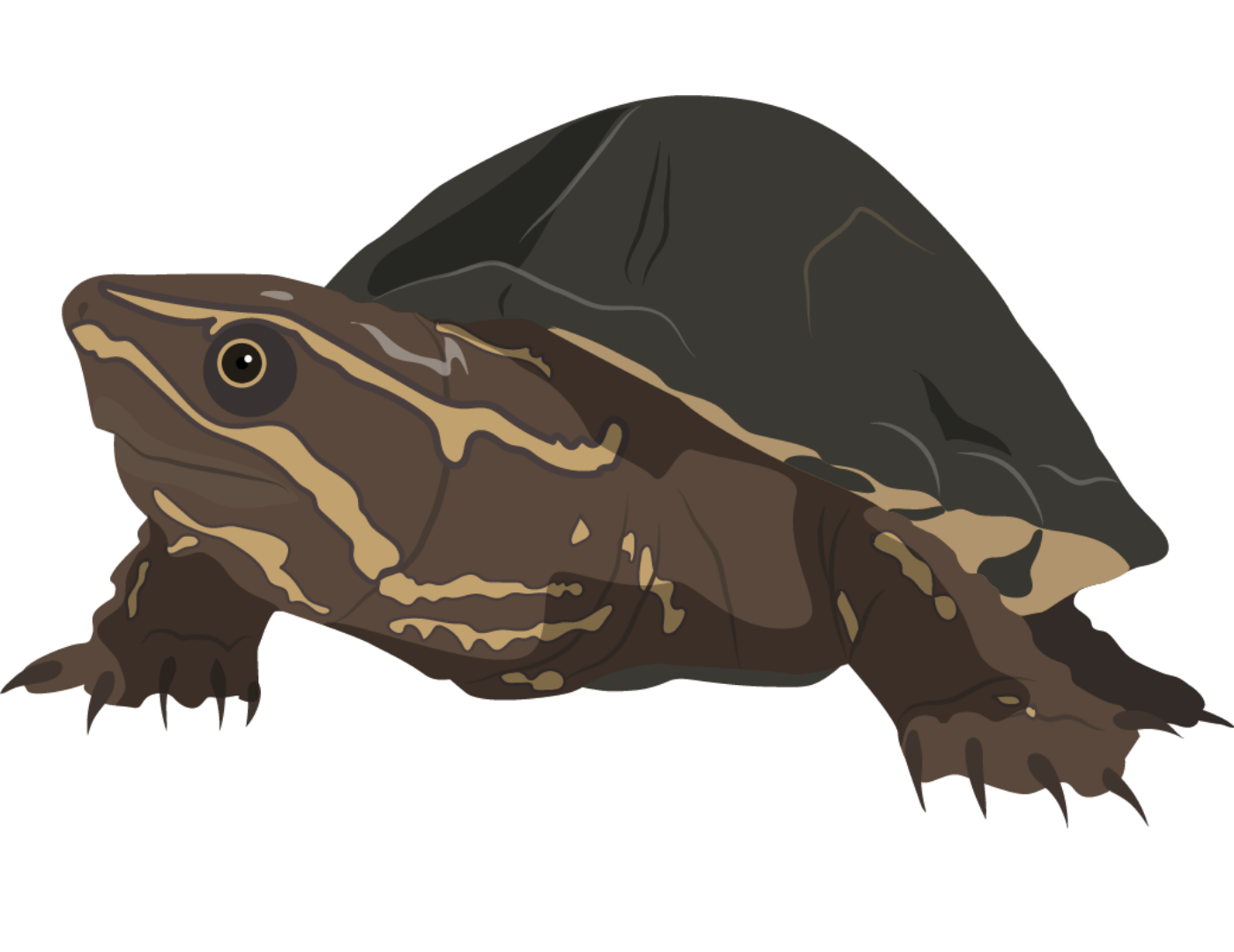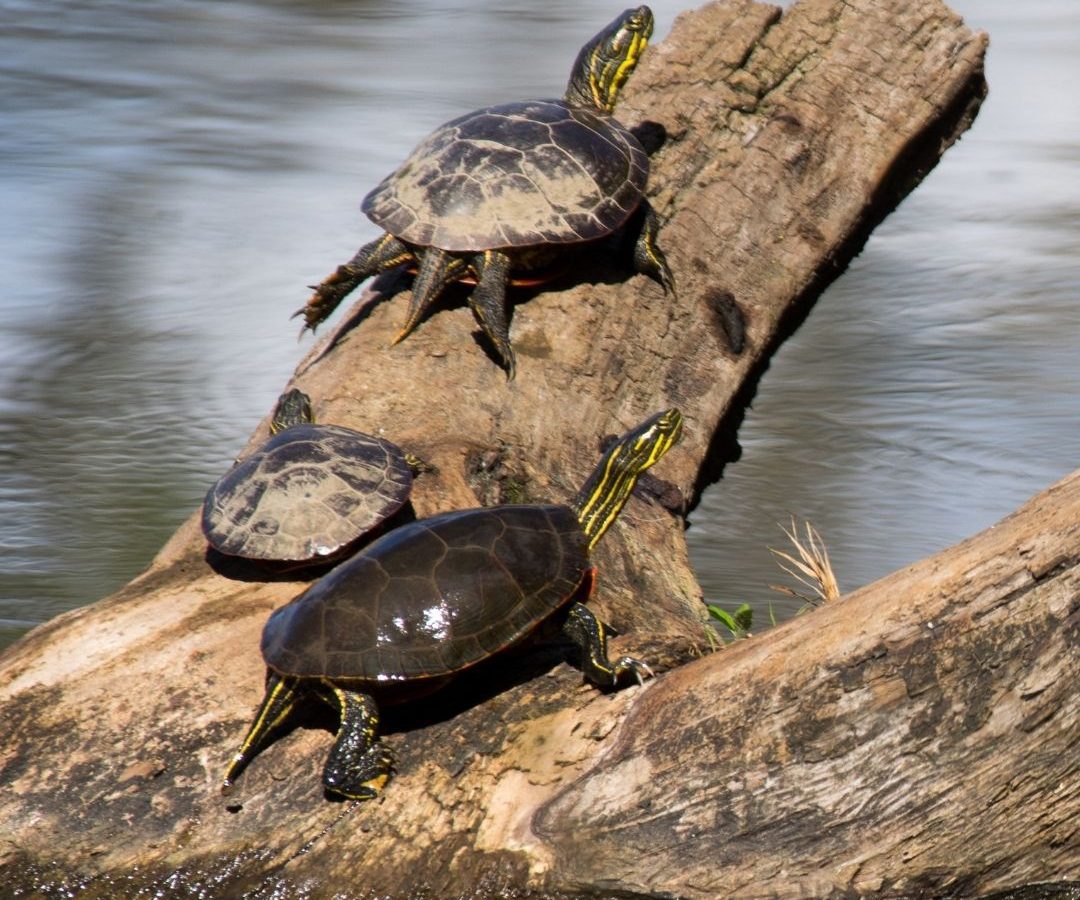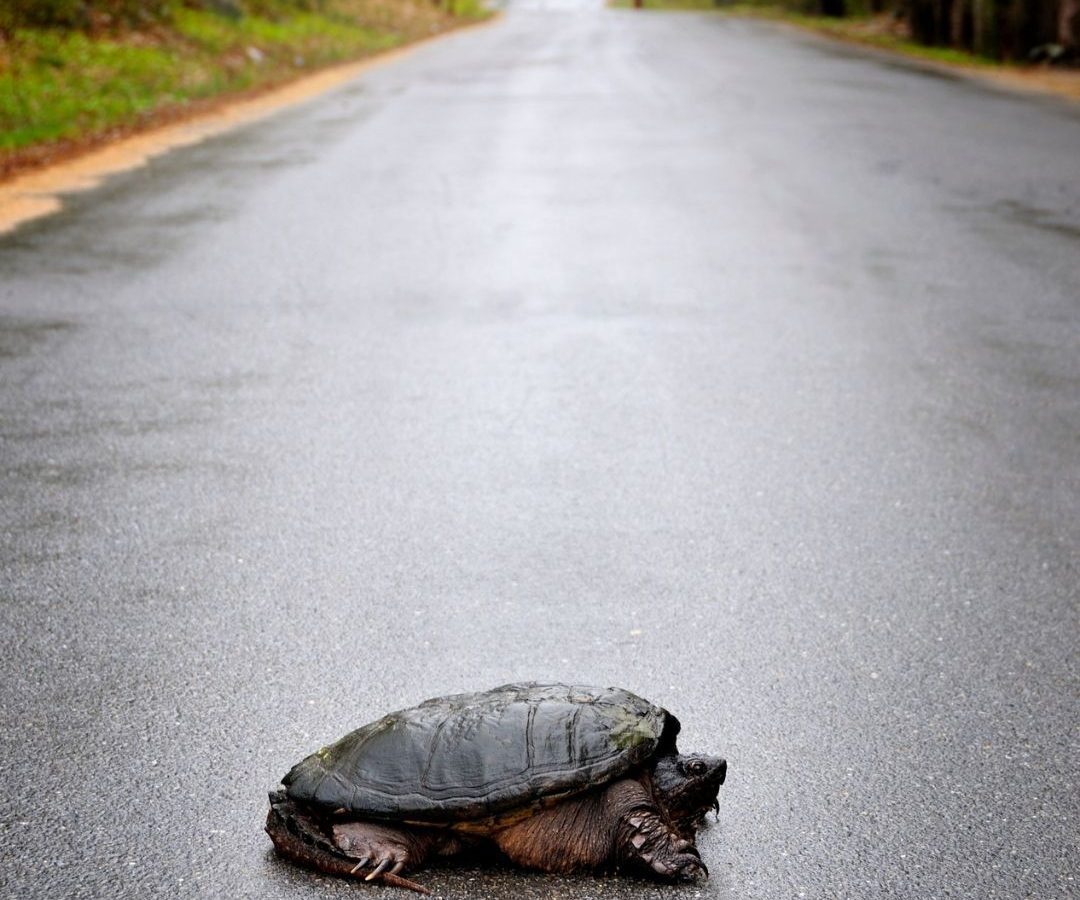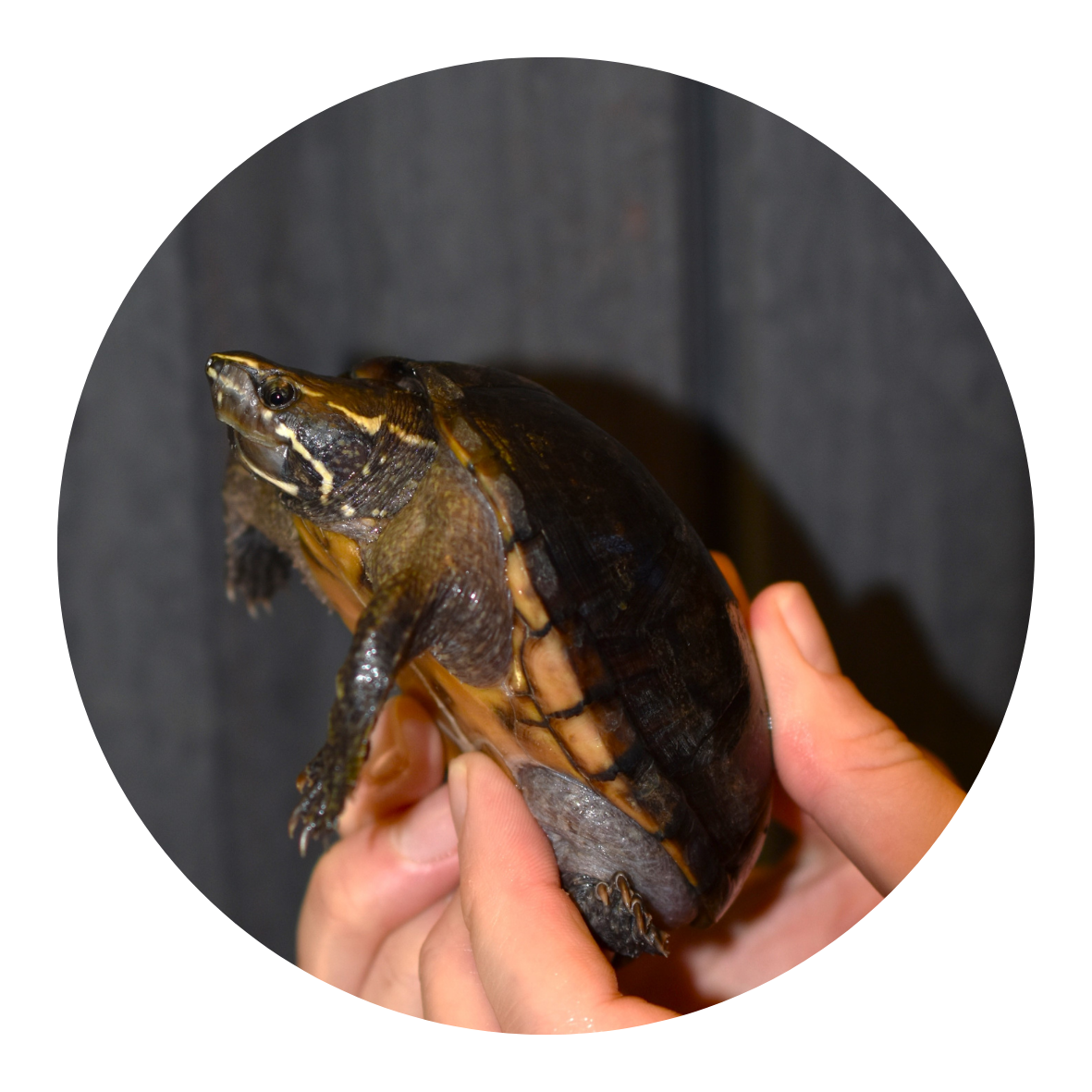
Species Identification:
The Eastern Musk Turtle is very small in size, rarely exceeding 13 cm in length. The carapace (top shell) is narrow and domed-shaped, and the colour ranges from grey to brown/black. The carapace sometimes has dark streaks or spots and is often covered in algae or mud. Their plastron (bottom shell) is smaller than the carapace and cross-shaped. The colour ranges from brown to yellow/cream. The Eastern Musk Turtle can be identified by their pointed snout with two yellow or white stripes extending from the nose across each side. They have a large head size in relation to their carapace. Eastern Musk Turtles are also affectionately referred to as “Stinkpots” because of the musk they emit, which is most likely to deter predators.
Diet:
Eastern Musk Turtles are bottom-feeding omnivores with a preference for meat and a strong enough bite to break open the shells of small snails and mussels. They also eat aquatic insects, carrion, earthworms, leeches, tadpoles, crustaceans, crayfish, insect larvae, algae, and aquatic plants. These little stinkpots often remain under the water for long periods of time to forage on the bottom of wetlands, lakes, ponds, or rivers. They prefer to forage and rest in places with lots of vegetation for hiding.
Biology and Behaviour:
Active season for the Eastern Musk Turtle is from April to early October. They can be seen basking in shallow water or crawling along the bottom of shallow water. Stinkpots can breathe using both air and water, which allows them to stay underwater for long periods of time without the need to resurface. They will not often bask out of water, but near the surface of water under the cover of lily pads or other floating vegetation and debris. Stinkpots are adept at both swimming and walking along the bottom of a body of water, especially when foraging.
During the nesting season, which is generally mid-May to early July, female Stinkpots will dig shallow nests in decaying plant matter, rotting wood, sand, sparse shoreline grasses, sawdust piles, or in the walls of muskrat and beaver lodges. Most nests are shallow, with a maximum depth of about 10 cm. Nest sites are usually very close to shore, and they are generally laid at night. Eastern Musk Turtle females do not always dig their nest- they can also just scrape away decaying plant matter, rotting wood or other debris and cover the eggs back up. She will lay 1-9 eggs either once or twice a year. Incubation usually lasts for 65 to 86 days, and hatchlings will emerge in August and September
Once the weather starts to get cold, Stinkpots will travel to their hibernation sites, which are located at the bottom of shallow water, or in beaver and muskrat lodges.

Similar Species:
- Eastern Musk Turtles are often mistaken for juvenile Snapping Turtles because of their defensive behaviour when handled, and they have reduced plastrons (bottom shell) similar to a Snapper. To distinguish between this species and juvenile Snappers remember Stinkpots have the distinct white/yellow stripes along each side of their face, and Snapping Turtles have long tails with triangular upright scales
- The Eastern Musk Turtle’s domed shell is often mistaken for a juvenile Blanding’s Turtle, but Stinkpots lack the yellow chin and yellow-flecked shell
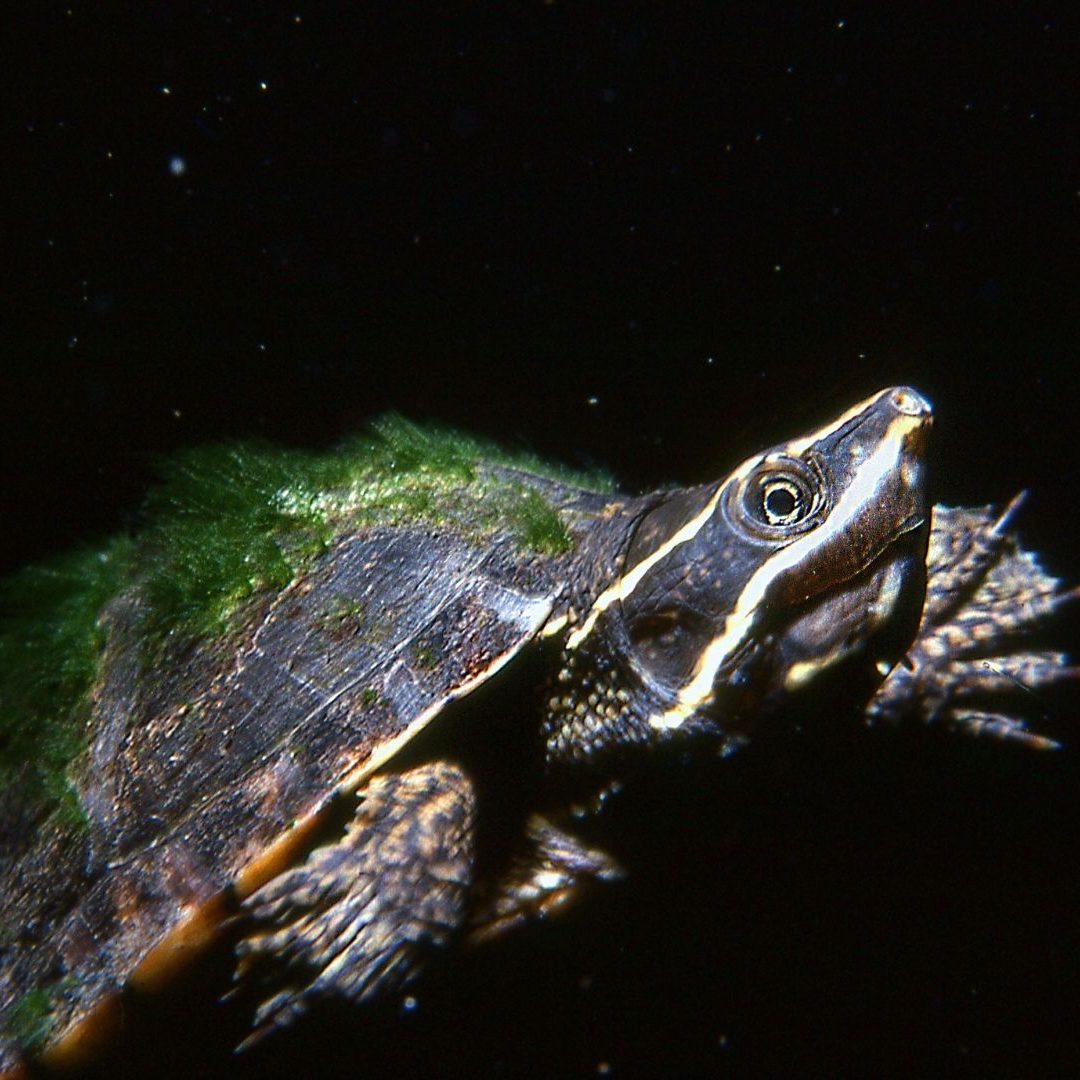
Conservation and recovery strategies:
Ideal conservation strategies would include maintaining aquatic connectivity of water bodies, protecting and restoring habitat-particularly shorelines, restoration projects and land acquisition. The government should also focus on regulating shoreline development and reducing boating speed limits or access to wetland areas.
Since the Eastern Musk Turtle is only listed as Special Concern in Canada, no direct efforts are being done by the Government. However, environmental organizations across Canada just like The Land Between have stepped up to help. The Land Between has workshops dedicated to helping landowners redesign their shorelines to bring them back to their natural state. This will not only help the Stinkpot, but also many other lake and wetland species. Environmental organizations are also trying to spread the word about the Eastern Musk Turtle, in order to encourage public awareness and participation to rehabilitate and keep their habitats safe.
Ernst, C. (1986). Ecology of the Turtle, Sternotherus odoratus, in Southeastern Pennsylvania. Journal of Herpetology, 20(3), 341-352.
COSEWIC. 2012. Eastern musk turtle (Sternotherus odoratus): COSEWIC assessment and status report. Committee on the Status of Endangered Wildlife in Canada. Ottawa. xiii + 68 pp. https://www.canada.ca/en/environment-climate-change/services/species-risk-public-registry/cosewic-assessments-status-reports/eastern-musk-turtle-sternotherus-odoratus.html
Environment Canada. 2016. Recovery Strategy for the Eastern Musk Turtle (Sternotherus odoratus) in Canada [Proposed]. Species at Risk Act Recovery Strategy Series. Environment Canada, Ottawa. viii + 58 pp. https://www.sararegistry.gc.ca/virtual_sara/files/plans/rs_eastern_musk_turtle_e_proposed.pdf



